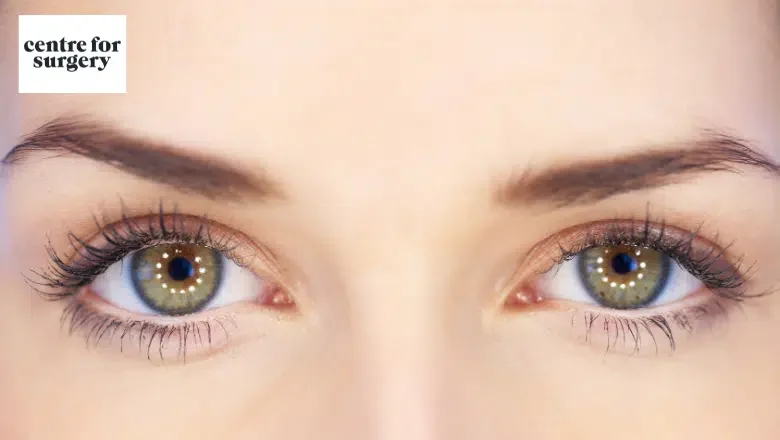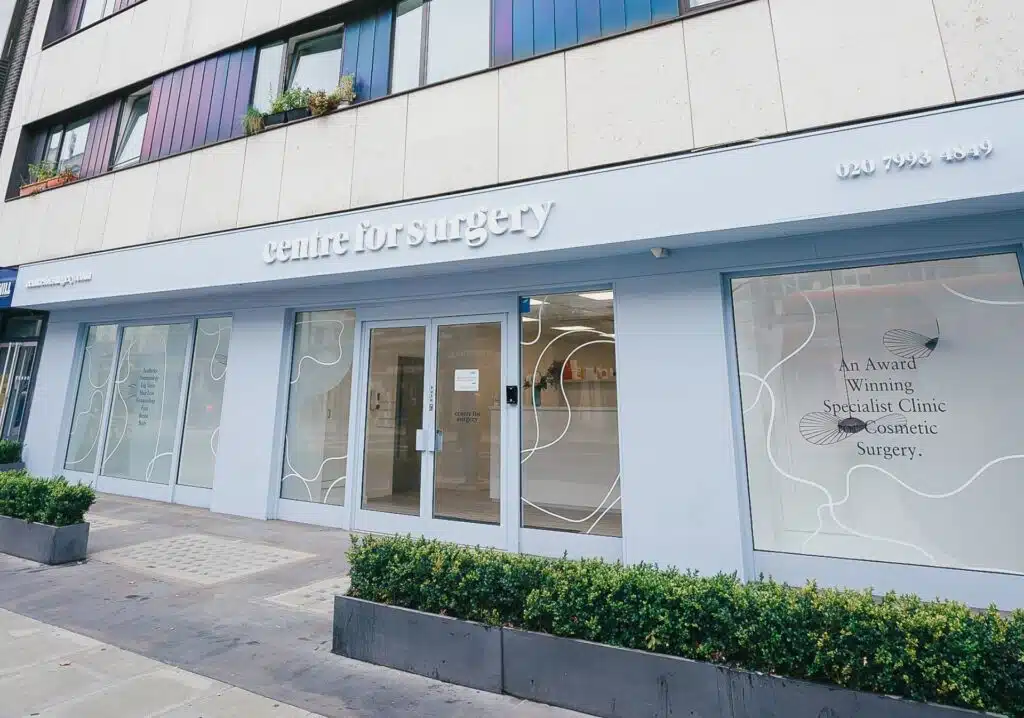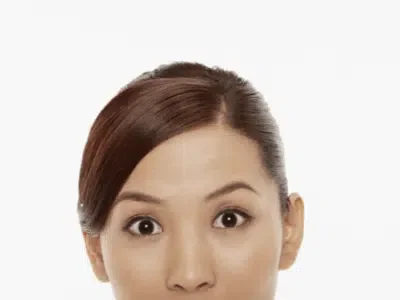Under Eye Hollow Treatment: Enhancing Your Delicate and Deep Eye Appearance
The eyes are considered the most captivating feature of the face due to their delicate yet deep appearance. Unfortunately, this also makes them vulnerable to age, stress, and other factors that can cause under-eye hollows.
Centre for Surgery is a top plastic surgery clinic in the UK, specialising in facial surgery. Our skilled surgeons have a deep understanding of facial anatomy and offer a range of treatments to enhance the delicate and deep appearance of your eyes.
Whether caused by ageing, genetics, or other factors, under-eye hollows can make you look tired and older than your age. Fortunately, several effective treatments are available to help you restore a youthful and refreshed appearance.
RELATED: How To Get Rid of Under-Eye Bags?
During your consultation, our experienced surgeons will evaluate your individual needs and provide you with personalised recommendations for treatment. Contact us today to schedule a consultation and take the first step towards enhancing your delicate and deep eye appearance.
Understanding Tear Trough Deformity: Causes and Treatment Options
A tear trough deformity is a common cosmetic issue that affects many individuals, causing a deep line or crease between the lower eyelid, upper cheek, and nose. This condition can cause a person to appear tired, sad, and older than they are, negatively impacting their overall appearance and self-esteem.
The development of a tear trough deformity is attributed to various factors, including genetics, ageing, weight loss, and stress. Some people are born with a tear trough deformity that becomes more apparent as they age, while others develop it later in life due to lifestyle factors such as weight loss or excessive stress.
As people age, they naturally experience a loss of volume in their face, resulting in a sunken appearance and deepening of the tear troughs. Weight loss and stress can also cause a tear trough deformity, making it more pronounced and difficult to hide with makeup.
RELATED: Sunken Eyes – Causes & Treatments
Fortunately, several treatment options are available to address tear trough deformities. The most common treatment is tear trough filler. This minimally invasive procedure involves injecting hyaluronic acid fillers beneath the eyes to plump up the area and smooth out the crease. This treatment can provide a natural-looking, youthful appearance that can last up to 18 months.
Another treatment option is lower blepharoplasty, a surgical procedure that involves removing excess skin and fat from the lower eyelid area to eliminate under-eye bags and smooth out the tear trough deformity. This procedure is more invasive than tear trough filler but can provide long-lasting results.
Who is a Good Candidate for Treatment of Tear Trough Deformity?
Determining eligibility criteria for tear trough deformity treatment is crucial to ensure the procedure is safe and effective for patients. Candidates for both injectable and surgical treatments must meet specific requirements to ensure the best possible results.
For injectable treatments, ideal candidates are those with tear trough deformity without dark circles or damaged skin around the eyes, and have overall good health. They should also be aware of the potential side effects of the procedure and have realistic expectations.
On the other hand, candidates for surgical treatment or blepharoplasty should be physically and mentally healthy, non-smokers, and have a tear trough deformity due to congenital factors, ageing, weight loss, or negative vector orbit. They should also have realistic expectations and understand the potential complications of the procedure.
Centre for Surgery is one of the leading plastic surgery clinics in the UK for facial surgery, offering both injectable and surgical treatment options for tear trough deformity. Our experienced surgeons possess a profound understanding of facial anatomy and utilise the latest techniques and technologies to deliver safe and effective results. Contact us today to schedule a consultation and discover which treatment option is best suited for you.
Injectables for Treatment of Tear Trough Deformity
Tear Trough Fillers are a popular non-surgical option for treating tear trough deformity. This condition is characterised by a deep line or crease between the upper cheek, lower eyelid, and nose, which gives the eyes a tired and sunken appearance. Dermal fillers are injected into the area beneath the lower eyelids to increase volume, which tightens the skin and minimises fine lines, resulting in a more youthful look.
RELATED: Under Eye Fillers – Are Tear Trough Injections Worth It?
Before the procedure, the area is disinfected, and a topical anaesthetic cream is applied to numb the area. If the patient prefers, an ice bag can be used instead. The filler is then injected under the skin near the lower eyelid, with the injector slowly pulling out the needle and gently massaging the area to ensure complete coverage.
Different types of dermal fillers can be used for treating tear troughs. Juvederm is a group of hyaluronic acid fillers that can be used to improve the appearance of the entire face, including reducing fine lines, wrinkles, eye bags, and under-eye hollows. Restylane is another filler composed of hyaluronic acid that hydrates and rejuvenates the skin, leaving the under-eye hollows looking plump for almost a year. Belotero is a temporary filler that can be used to treat tear trough deformity, but it is most commonly used to reduce the appearance of nasolabial folds.
Candidates for this treatment should be suffering from tear trough deformity, have no dark circles, damaged skin, or thin under-eye skin, and be in overall good health. They should also be aware of the potential side effects of the procedure.
Injectables are a quick and relatively painless option for those seeking to enhance the appearance of their under-eye area without undergoing surgery. However, results are temporary, and patients will need to undergo additional treatments to maintain their appearance.
RELATED: How Long Do Tear Trough Fillers Last?
Surgical Treatment Options for Tear Trough Deformity
Tear trough deformity can be corrected through surgical options like blepharoplasty and fat transfer. While non-surgical options can provide temporary relief, surgical options are a permanent solution to this cosmetic concern.
Blepharoplasty, or eyelid surgery, is a procedure that involves the removal of excess skin and fat deposits from the upper or lower eyelid. It is a highly effective surgical treatment for correcting the appearance of under-eye hollows. During the procedure, the surgeon will reposition fat deposits around the lower eyelid, resulting in a plumper and more rejuvenated appearance. Both upper and lower blepharoplasty can be used to correct the hollow eye look.
While blepharoplasty is a permanent solution, it comes with a longer recovery time than non-surgical options. Patients can expect to experience some swelling, bruising, and discomfort for a few days after the procedure. However, it is rare for the deformity to recur after the surgery.
RELATED: Eyelid Surgery FAQs – Q&A about Blepharoplasty
Fat transfer is another surgical option for correcting under-eye hollows. In this procedure, the surgeon uses a cannula to graft fat from the hips, thighs, chest, or abdomen and prepare it for transfer. Once prepared, the fat is injected into the area under the eyes. The results are long-lasting and more natural-looking than other treatments like dermal fillers.
RELATED: Is facial fat transfer permanent?
Compared to blepharoplasty, fat transfer has a shorter recovery time. Since the body’s fat is used to fill the hollows, the results are natural-looking and permanent. However, patients should note that not all of the fat will survive after transfer and the body may reabsorb some.
Potential risks and complications of Tear Trough Deformity Treatments
The risks and complications associated with treating tear trough deformity are important to consider before undergoing any procedure. Dermal fillers used to treat under-eye hollows may result in side effects such as headaches, skin discolouration, allergic reactions, persistent pain, swelling around the eye, lumps filled with filler ingredients, granulomas, infections, vascular side effects (such as bleeding or occlusion of an artery), and a lack of desired results. It is essential to note that red-flag complications may also develop two weeks after the fillers are injected, warranting immediate medical attention. These complications include worsening bruising, worsening redness or swelling, persistent loss of sensation, extreme pain, severe infection, and blurry vision or other vision changes.
Surgical treatment for tear trough deformity may also come with risks and complications. Blepharoplasty surgery involves the removal of excess skin and fat deposits from the upper or lower eyelid. Complications may arise, such as hematoma or excessive bleeding, infection, reaction to anaesthesia, scarring, dry eyes, vision changes, asymmetry, nerve damage, and unsatisfactory results. While the results of blepharoplasty are long-lasting, the recovery time may be longer than that of non-surgical procedures, and patients should expect bruising and swelling to persist for up to two weeks following the procedure.
RELATED: How to Reduce Bruising and Swelling after Eyelid Surgery
Fat transfer is another surgical treatment option for tear trough deformity that involves injecting fat from other areas of the body into the under-eye region. Risks and complications of this procedure include infection, overcorrection, asymmetry, hematoma, and lumpiness.
FAQs about Tear Trough Deformity
Why do tear troughs form?
Tear troughs form for various reasons, including genetics, ageing, weight loss, and stress. The skin and soft tissues around the eyes begin to lose volume, and the fat pads beneath the eyes start to shift and bulge forward, creating a hollow or depression below the lower eyelid. This creates a shadow that can appear as a dark circle or tear trough, giving the eyes a tired and aged appearance.
Does everyone have tear troughs?
Not everyone has tear troughs. Some people have a natural hollowness under their eyes, while others may develop it as they age or due to other factors such as weight loss, stress, or genetics.
How do you hide tear troughs?
To conceal tear troughs, you can use makeup techniques such as concealer, colour-correctors, and highlighting powders to camouflage the area. A high-quality concealer that matches your skin tone can help reduce the appearance of dark circles, while a highlighting powder can brighten the under-eye area and make it appear more youthful.
Can tear troughs go away?
Tear troughs may not go away on their own, mainly if they are caused by genetics or ageing. However, various treatments are available to reduce their appearance, including dermal fillers, fat transfer, and surgery.
Does drinking water help tear trough?
Drinking water can help improve the overall health and appearance of your skin, but it may not necessarily help reduce the appearance of tear troughs. While hydration is important for healthy skin, tear troughs are caused by structural changes in the skin and underlying tissues.
How can you naturally treat tear troughs?
Several natural remedies, such as getting enough sleep, reducing stress, and using cold compresses or cucumbers on the eyes, may help improve the appearance of tear troughs. However, these methods may only provide temporary relief and are not effective for everyone.
Can retinol help tear troughs?
Retinol is a derivative of vitamin A that is commonly used in skincare products to improve the overall health and appearance of the skin. While retinol may help improve the texture and tone of the skin, it may not necessarily help reduce the appearance of tear troughs. However, retinol can promote skin cell turnover and collagen production, which can help improve the appearance of fine lines and wrinkles around the eyes.
How can I improve the appearance of tear troughs?
You can improve the appearance of tear troughs with various treatments, including dermal fillers, fat transfer, and surgery. Dermal fillers are a popular treatment option that involves injecting hyaluronic acid or other fillers under the skin to plump up the area and reduce the appearance of hollowness. Fat transfer involves taking fat from different areas of the body and injecting it into the under-eye area to create a natural-looking fullness. Surgery, such as blepharoplasty, involves removing excess skin and fat from the under-eye area to create a smoother and more youthful appearance.
Who is not suitable for tear trough filler?
Tear trough fillers may not be suitable for everyone, especially those with certain medical conditions or allergies. Patients who are pregnant or breastfeeding should avoid tear trough fillers, as well as those with a history of severe allergic reactions or bleeding disorders. Additionally, those with certain medical conditions, such as autoimmune disorders, infections, or cancer, may not be eligible for tear trough filler. It is essential to discuss your medical history with your provider before undergoing any treatment.
Why have tear trough deformity treatment at Centre for Surgery?
One of the main reasons to choose Centre for Surgery is our team of highly skilled and experienced surgeons. Our surgeons are renowned experts in the field of facial surgery, with extensive experience in performing treatments for tear trough deformities. They use the latest techniques and state-of-the-art equipment to ensure that every patient receives the best possible results.
We are also committed to providing a personalised service to each patient. We understand that every patient is unique, and we take the time to understand their individual needs and goals. We work closely with our patients to develop a treatment plan tailored to their specific needs.
Patient safety is our top priority. We adhere to strict safety standards and protocols to ensure that every patient is treated in a safe and secure environment. We also provide comprehensive aftercare services to ensure that our patients recover smoothly and comfortably.
We believe in transparency and honesty when it comes to our treatments. We provide detailed information on our website about the risks and benefits of tear trough deformity treatments. We want our patients to make informed decisions about their treatment, and we are always available to answer any questions they may have.










